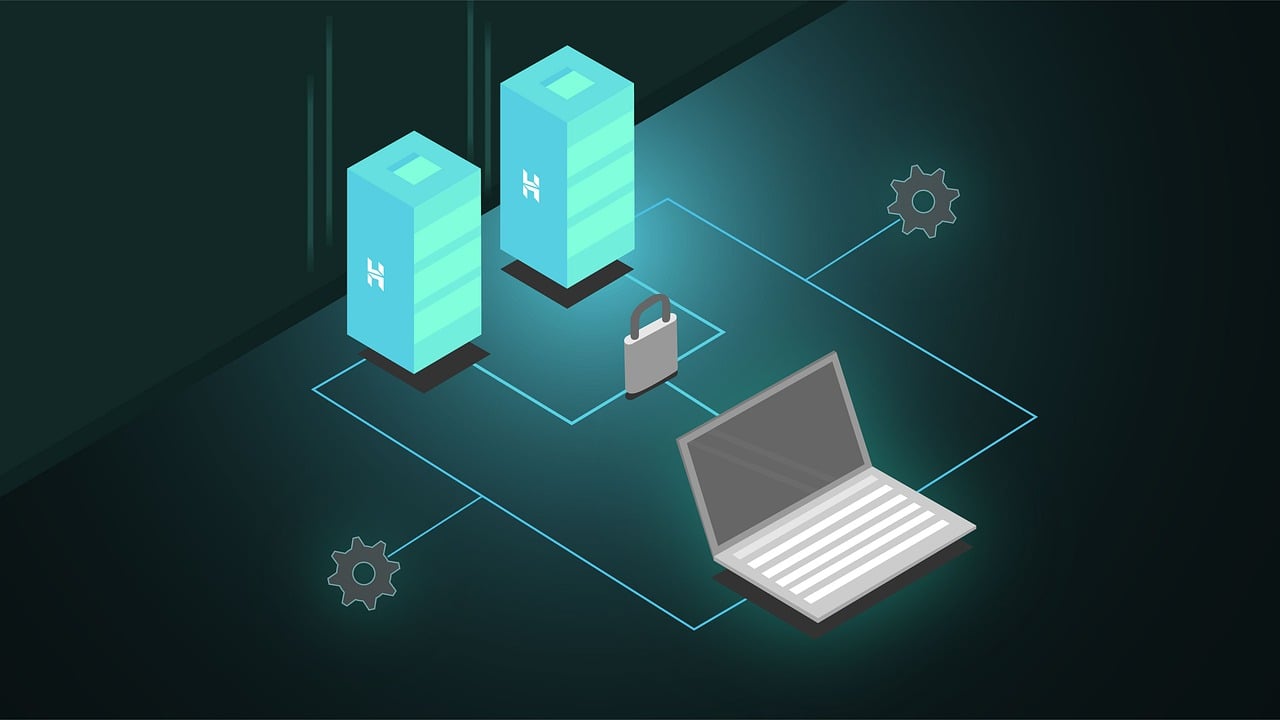Enhancing Your E-Commerce Business with ERP Integration

Contents:
- Benefits of ERP Integration for E-commerce
- When Do You Need ERP Integration
- How to Implement ERP for E-Commerce
- Common ERP Integration Patterns
- Why Companies Prefer ERP-Integrated E-Commerce
- Summing Up
In the rapidly evolving world of e-commerce, staying ahead of the competition and delivering exceptional customer experiences are crucial. One effective tool that can help achieve these goals is ERP integration.
Enterprise Resource Planning, or ERP, is a special software that helps a company manage all its important information and activities in one place. Instead of using different systems for accounting, inventory, sales, and other stuff, ERP combines everything together.
ERP integration involves connecting your e-commerce platform with an ERP system, which consolidates various business processes into a unified system. This integration not only streamlines your operations but also offers numerous benefits to both your business and customers.
Benefits of ERP Integration for E-commerce
- Centralized Data Management: ERP integration minimizes data discrepancies and ensures consistency across all business functions by centralizing data management.
- Increased Operational Efficiency: Automating repetitive tasks and streamlined workflows improve operational efficiency and reduce manual errors.
- Improved Customer Satisfaction: Accurate inventory information, order tracking, and faster delivery times enhance customer satisfaction and loyalty.
- Data Driven Decision Making: ERP-integrated e-commerce platforms provide real-time reporting and analytics, facilitating data-driven decision-making.
When Do You Need ERP Integration?
If your e-commerce business faces the following challenges, it may be the right time to consider ERP integration:
Inventory Management
As your business grows, managing inventory across multiple sales channels, warehouses, and suppliers can become challenging. ERP integration helps synchronize inventory levels in real-time, preventing overselling and stockouts while providing a centralized view of your inventory.
Example: An electronics company expanded its e-commerce presence, but with separate inventory management systems, they faced stock outs during peak seasons. After ERP integration, they achieved real-time visibility of stock levels, leading to better stock management and increased sales.
Order Processing
When order volumes increase, manually processing and managing orders can be time-consuming and error-prone. Integrating your e-commerce platform with an ERP system automates the order-to-fulfillment process, reducing delays and enhancing customer satisfaction.
Example: A fashion company experienced order processing delays due to manual order fulfillment. ERP integration streamlined their order processing, reducing fulfillment time by 50% and improving customer satisfaction.
Accounting and Finance
Keeping track of financial data, such as revenue, expenses, and taxes, is essential for any business. ERP integration ensures that all relevant financial data from e-commerce transactions is accurately recorded and easily accessible for accounting purposes.
Example: A sports-related business faced accounting errors due to manual data entry from their e-commerce platform to their accounting software. ERP integration enabled automatic data transfer, reducing accounting errors and providing accurate financial reports.
Customer Relationship Management (CRM)
Maintaining a comprehensive customer database and tracking interactions can be pivotal for marketing and customer service efforts. Integrating CRM functionalities with your ERP system allows you to better understand and engage with customers, improving their overall experience.
Example: An e-commerce retailer that sells toys struggled to personalize their customer marketing campaigns ERP-CRM integration gave them valuable customer insights, leading to targeted marketing strategies and increased customer engagement.
How to Implement ERP for E-Commerce
To implement ERP for e-commerce, follow these steps:
- Understand Business Requirements:
- Identify specific needs of your e-commerce business.
- Involve key stakeholders in the planning process.
- Research ERP Vendors:
- Evaluate ERP vendors catering to e-commerce.
- Consider factors like scalability, features, integration capabilities, support, and cost.
- Data Preparation:
- Prepare and cleanse e-commerce data for migration to ERP.
- Ensure data accuracy for a smooth transition.
- Customization:
- Customize the ERP system to match your business requirements and processes.
- Tailor it to meet your unique e-commerce needs.
- Integration:
- Seamlessly integrate the ERP system with your e-commerce platform.
- Enable smooth data flow between the two systems.
- Data Migration:
- Migrate prepared data from the existing e-commerce system to the ERP.
- Ensure meticulous accuracy during the migration process.
- Testing:
- Thoroughly test the ERP system to check its functionality.
- Verify seamless integration with the e-commerce platform.
- Training:
- Provide comprehensive training to your e-commerce team.
- Ensure they are well-prepared to effectively use the ERP system.
- Launch and Support:
- Launch the ERP system and monitor its performance closely.
- Offer post-implementation support to address any issues or challenges.
- Regular Reviews:
- Conduct regular reviews of the ERP system's performance.
- Identify areas for optimization to enhance e-commerce operations.
Common ERP Integration Patterns
Point-to-Point Integration: Direct connections between the ERP system and individual applications, which become complex as the number of integrations grows.
Hub-and-Spoke Integration: A central integration hub acts as an intermediary connecting the ERP system with various applications, simplifying management and monitoring.
Batch Integration: An integration where data transfer occurs in predefined batches at scheduled intervals, suitable for non-real-time data exchange. (For example, uploading product data to the ERP system every night).
Real-time Integration: Immediate data exchange between the ERP system and connected applications, ideal for up-to-date information across all systems. (For example, instantly updating inventory levels when a customer places an order).
Why Companies Prefer ERP-Integrated E-Commerce
We interviewed several e-commerce businesses to dive deeper into the transformative impact of integrating ERP systems. Below, we present insights into how ERP integration revolutionized inventory management, production processes, and customer relations.
Streamlining Operations
Nikhil Jogia, Managing Director, Jogia Diamonds:
Before integrating the ERP system, managing different aspects of our business, such as inventory and order fulfillment, was a challenge. This was especially true once our customer base grew and demand for customized jewelry increased—tracking inventory accurately and processing orders smoothly became non-negotiable.
Integrating the ERP system transformed our operations. It provided us with real-time inventory visibility, which helped us manage stock levels efficiently and prevent stockouts or overstocking. This streamlined our production process and improved customer satisfaction by ensuring prompt order fulfillment.
The ERP system also automated manual processes, like generating invoices and tracking shipments, thereby reducing human error and saving time. With a centralized system, we could easily access relevant data, track orders, and provide accurate information to our customers.
Unlocking Product and Customer Synergy
Oliver Hudson, Director, BlindsByPost:
I can firmly say that integrating ERP systems into our e-commerce business has been nothing short of transformative. Our unique challenges as an online blinds retailer required a seamless blend of inventory, production, and customer management, and ERP was the golden key to unlocking this synergy.
ERP integration has propelled us towards streamlined operational efficiency. Before, we'd grapple with disparate data sources and manual intervention to match inventory with sales, leading to inaccurate forecasting and disappointed customers.
Today, with a fully integrated ERP system, we have a real-time, accurate snapshot of our inventory levels and customer demand. We've bid goodbye to overselling and stock shortages, seeing a remarkable boost in customer satisfaction and retention.
Revolutionizing Furniture Retail: How ERP Streamlined Operations and Accelerated Growth
Alex Sheplyakov, CTO at WiserBrand:
Integrating the ERP system at our client’s furniture store revolutionized their operations. The PIM capabilities enabled effortless import/export, accelerating catalog updates. It enhanced site infrastructure flexibility, streamlining the addition of new product fields. With improved inventory management, they responded faster to market demands, boosting development. Automation reduces errors, saving time, and improving overall efficiency. Our client’s business flourished, delivering better customer service and strengthening their position in the market.
Summing Up
In conclusion, ERP integration offers numerous benefits to e-commerce businesses, such as:
- Streamlined operations
- Improved efficiency
- Enhanced customer satisfaction
- Data-driven decision-making
By seamlessly connecting different aspects of your business, an ERP-integrated e-commerce platform enables you to stay competitive and deliver exceptional customer experiences in today's fast-paced market.
Whether it's managing inventory, processing orders, handling finances, or understanding customer interactions, ERP integration provides a comprehensive solution to elevate your e-commerce business to new heights.
